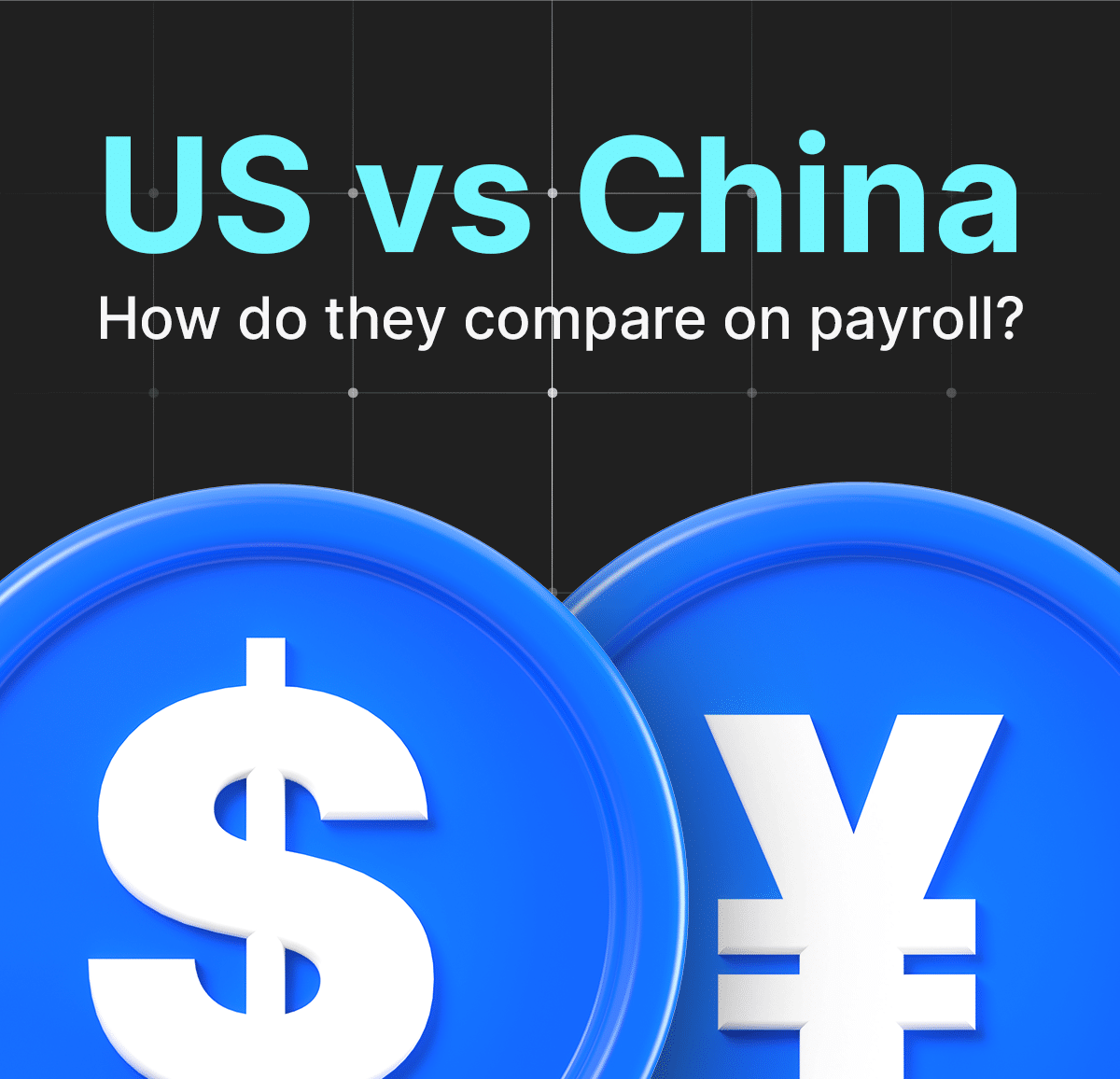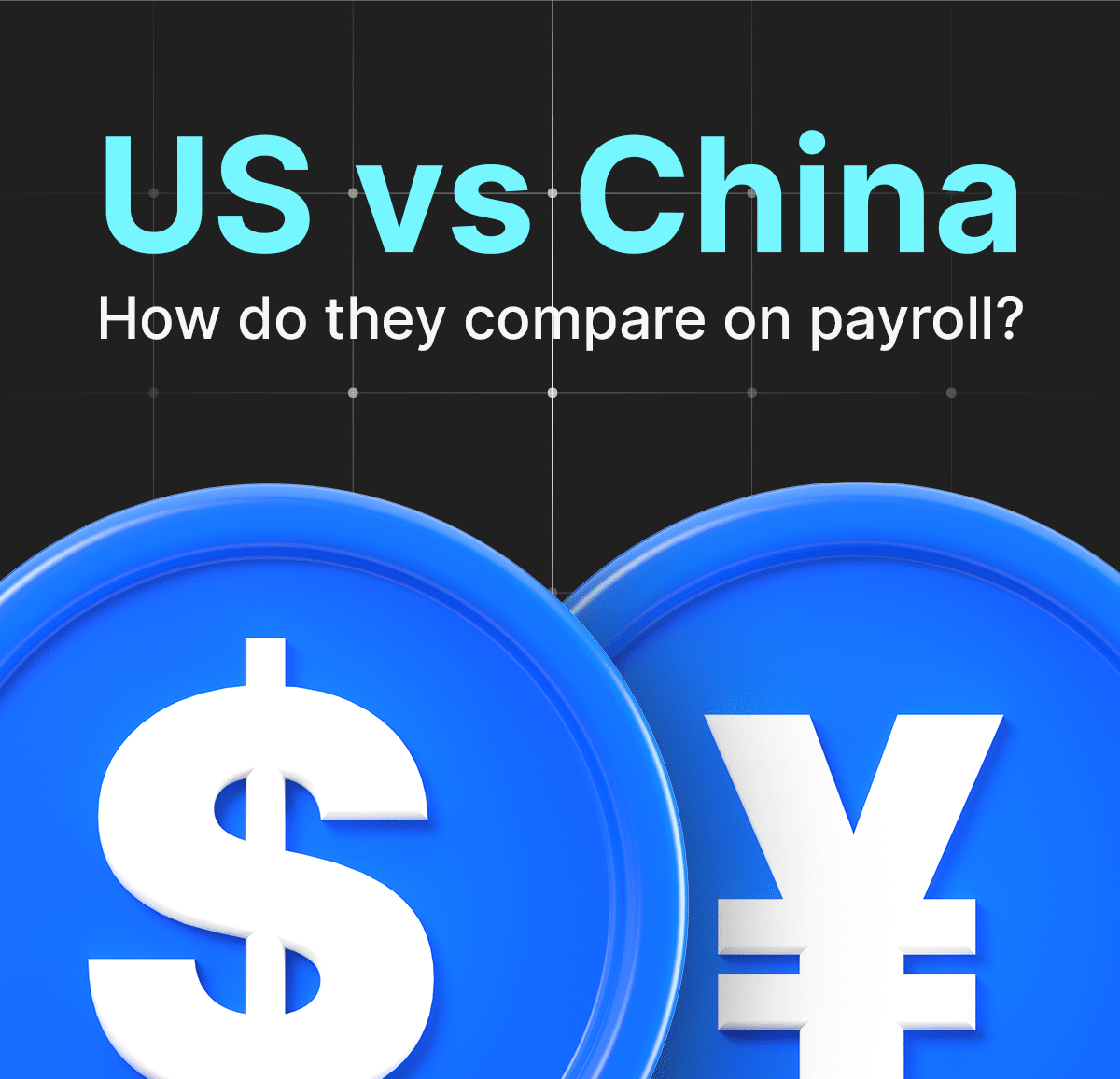Between them, the United States and China account for nearly half of the world’s gross domestic product (GDP). And this means that the economic performance of the two countries – and the trade relationship between the two – has ramifications for every business around the world, either directly or indirectly.
The two countries have very different approaches to business, both historically and in the present day, shaped by distinct economic conditions and demographic factors. That divergence is reflected in payroll operations, where there are substantial differences in payroll efficiency, processing and performance.
However, this doesn’t mean that one country is doing things the ‘right’ way and the other is doing things the ‘wrong’ way. In this year’s CloudPay Global Payroll Efficiency Index report, we found that both countries were global leaders in different metrics. China has the highest first-time approval rate in the world at 96.54%, while the United States has the fastest processing speed, with a calendar length of just 3.59 days.
Here, we’ll take a detailed look at some of the other results the two countries generated in this year’s PEI report, and what organizations like yours can learn and apply to your own payroll strategy in light of current economic growth patterns and geopolitical considerations.
China: Right first time
It wasn’t so long ago that China was considered a particularly challenging environment for payroll, which makes its world-leading position for FTA even more remarkable. It’s the only country that has ranked in the top five for FTA in each of the last two reports, and its figure of 96.54% is far above the regional average for the Americas (78.97%). This accuracy is backed up by a rate of just 0.7 issues per 1000 payslips, which is also very low by global standards.
In the PEI Matrix, which overlays payroll difficulty and efficiency, China’s difficulty level has dropped from eight to five, and it now sits in the coveted “least difficult, very efficient” quadrant for the first time. All this improvement is likely down to greater adoption of payroll technology, with increased automation and process optimization easing issues around complexity and talent shortages.
The United States: Speed is king
While the United States has the world’s shortest calendar length at 3.59 days, this actually represents an increase as it posted a figure of 3.2 days in last year’s report. As a consistent global leader in technology, American organizations have been able to maximize the efficiency of its payroll operations, without introducing unnecessary errors by doing things too quickly. And with the US playing such a large role in the global economy, it means it is a major contributor to the high global on-time payment rate of 99.12%.
The rest of the Americas region is gradually catching up to the US’s level of performance, as technological advancements, monthly payroll cycles and on-demand pay become more commonplace. The overall average calendar length for the Americas region is now down to 5.4 days, having been 5.8 last year.
What do these results mean for data quality?
In this year’s PEI report, a new automated measurement system means that the calculation method has changed for two metrics: data input issues (DII) and issues per 1000 payslips (I/1000). This has allowed us to detect and report on issues in real-time, and take a more proactive approach to identifying and resolving issues.
This change has uncovered some interesting differences in how China and the US approach and maintain data quality. China’s low I/1000 rate of 0.7 is already very good, but now that its payroll difficulty level has decreased and technology take-up is more common, there is scope to improve this performance even further in the years to come.
The average payslip in the Americas region has 0.34 data input issues, which is a very strong performance, and supported by successful digitalization and process optimization efforts in the US and throughout the rest of the region. By contrast, in the Asia-Pacific region where tech adoption is much lower, the DII rate is much higher at 1.4.






